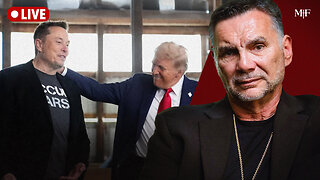Premium Only Content

Experts Explain | What makes social movements succeed? | Professor Hahrie Han | WEF
Social movements are behind the most powerful changes in the world – from voting rights to political upheavals to the fight for racial equality. But how do you build a movement that unites millions of people and captures the attention of those in power?
This episode of the World Economic Forum’s #ExpertsExplain series delves into the art of creating successful social movements with #HahrieHan, Professor of Political Science at #JohnsHopkinsUniversity.
Han is also Inaugural Director of #SNFAgora Institute, using data and research to realise the promise of democracy all over the world, and an award-winning member of the Schwab Foundation for Social Enterpreneurship.
We live in an era when social media makes it easier than ever to find followers and get noticed. ‘I can send out one tweet or a viral hashtag. I can get hundreds of thousands or even millions of people out into the streets,’ says Han, who has written four books about #SocialChange.
‘But when you talk to the people who are on the frontlines, on the one hand they feel like it's easier than ever before to get people involved – but on the other hand, it's harder than ever to make it feel like their participation actually matters.’
So what exactly is the secret to a successful #protest or wider action for #socialgood?
According to Han, there’s more than one. A good movement needs to ‘make the participation of ordinary people possible, so that people can participate,’ she begins. After that, a good movement ‘makes it probable, so that people want to participate. And then it makes it powerful. It creates a scaffolding or a vehicle through which people can realise their own power.
‘And one of the trends that we're seeing in social movements in the 21st century is this funny paradox between participation being possible but not being as powerful.’
-
 UPCOMING
UPCOMING
MYLUNCHBREAK CHANNEL PAGE
7 hours agoUnder The Necropolis - Pt 6
4.05K2 -
 56:50
56:50
IsaacButterfield
20 hours ago $0.31 earnedSam Kerr Goes To Jail | Americas Worst Law | Teacher Of The Year
1.02K5 -
 6:14
6:14
Silver Dragons
1 day agoAmerican Silver Eagle Coins - Dealer Reveals Everything You NEED to Know
6584 -
 19:18
19:18
Neil McCoy-Ward
1 day ago🚨 The USAID Scandal Goes Way Deeper Than We Could Have Imagined!
1.22K6 -
 14:29
14:29
Bearing
7 hours agoTHE BIG BALLS EFFECT - Democrats MELT DOWN Over DOGE & USAID 🔥
1.93K42 -
 11:35
11:35
China Uncensored
23 hours agoChina Nuclear Fusion Breakthrough Shocks The World
2.18K14 -
 50:19
50:19
AlaskanBallistics
16 hours ago $0.12 earnedI Love This Gun Podcast Episode 6
219 -
 16:35
16:35
DEADBUGsays
1 day agoPolice Stories Ep4
331 -
 6:15
6:15
RTT: Guns & Gear
1 day ago $0.02 earnedSaying Goodbye To A Legend - Demolition Ranch Leaving YouTube
1934 -
 1:33:27
1:33:27
Michael Franzese
19 hours agoWhat's Elon Musk's NEXT BIG Plan?
35K26